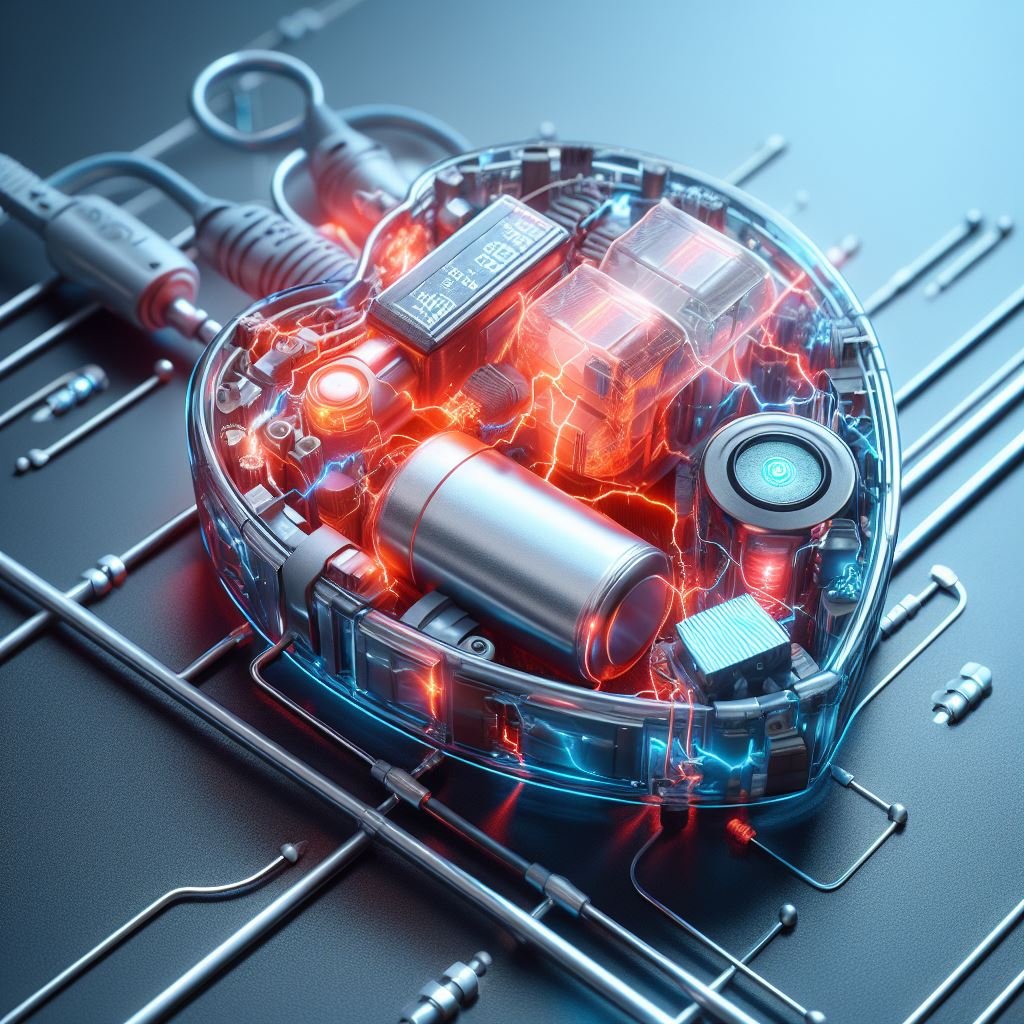Experimental pacemaker converts heartbeat energy to recharge battery
An experimental, leadless pacemaker housing is able to partially recharge the device’s battery by generating electrical energy from heartbeats. The device generated about 10% of the energy needed to stimulate another heartbeat.
By American Heart Association
Credit: Conceptual image generated by DALL-E 2 from Microsoft Bing.
By converting mechanical energy into electrical energy, an experimental wireless, or leadless, pacemaker housing is able to partially recharge its battery, according to a proof-of-principle study to be presented at the American Heart Association’s Scientific Sessions 2023. The meeting, to be held Nov. 11-13, in Philadelphia, is a premier global exchange of the latest scientific advancements, research and evidence-based clinical practice updates in cardiovascular science.
“Mechanical and electrical energy are linked and can be exchanged back and forth,” said lead study author Babak Nazer, M.D., an associate professor of medicine at the University of Washington in Seattle. “Just like ultrasound converts electrical voltage into pressure or sound, we can engineer similar materials onto implantable medical devices to convert the heart’s natural oscillating pressures backward into voltage to prolong battery life.”
According to the American Heart Association, traditional (transvenous) pacemakers have tiny wires, or leads, that connect to the heart on one end and on the other end, to a generator (which includes the battery) just under the skin of the left shoulder. The leads use sensors, or electrodes, to detect the patient’s heartbeat and then send electrical impulses to the heart to provide pacing, if needed.
From a vein in the leg to heart’s right ventricle.
In contrast, leadless pacemakers are all-in-one devices that are smaller than a transvenous pacemaker and reside entirely within the heart’s right ventricle after being inserted through a small tube threaded up to the heart via a vein in the leg. A drawback to the leadless pacemaker is that the battery cannot be easily replaced like the battery of a transvenous pacemaker. A typical battery in both traditional and wireless pacemakers lasts 6 to 15 years. In addition, removing a leadless pacemaker is difficult since it is inside the heart, so it may be necessary to implant new pacemakers alongside the previous ones that have lost their battery charge. In younger patients, who may require multiple pacemakers throughout their lives, this approach is impractical.
In this study, the researchers engineered three prototype devices and tested them in a cardiac pressure simulator to test their voltage output in response to oscillating pressures simulating those of the right ventricle. Similar in size to current commercially available, leadless pacemakers, the prototype devices were also about one-third the size of a AAA battery.
After placing the prototype devices into a special machine set to simulate the heart’s natural pressures at a rate of 60 beats per minute, researchers recorded the energy that the device generated in response to this artificial heartbeat. They found that the best of the three prototypes harvested approximately 10% of the energy necessary to pace the “next beat,” based on average pacemaker output.
“Our next step is to optimize materials and fabrication to improve energy harvesting efficiency, and then show we can do so consistently in long-term studies. When we can improve upon our 10% harvesting efficiency, we hope to partner with one of the major pacemaker companies to incorporate our design and housing into an existing leadless pacemaker,” Nazer said. “We hope to prolong battery life further and expand access of this product to younger patients, who would hopefully require fewer implants over their lifetime.”
According to the American Heart Association’s Heart Disease and Stroke Statistics—2023 Update, an estimated 93,000 pacemaker and defibrillator procedures were performed for inpatients in 2018 in the United States.
A classic pacemaker. Courtesy: CC BY-SA 3.0/Lucien Monfils
“This experimental study provides valuable information on harvesting energy from the heart to recharge pacemaker batteries. These new devices could also improve patients’ quality of life by requiring fewer procedures as they are smaller and last longer,” said Kenneth A. Ellenbogen, M.D., FAHA, co-author of the 2018 ACC/AHA/HRS Guideline on the Evaluation and Management of Patients With Bradycardia and Cardiac Conduction Delay, and the Kimmerling Professor of Cardiology at the VCU School of Medicine in Richmond, Virginia.
The study had several limitations. As a preliminary study of an experimental device, it is unclear if the findings can be translated to a pacemaker that works safely and durably in people, however, Nazer’s laboratory plans long-term, in-vivo experiments as a next step. In addition, the study looked only at the energy required for the next heartbeat. It did not consider the energy that a pacemaker requires to monitor the heartbeat and communicate findings back to the pacemaker, which comprises a large part of the drain on the battery. Future generations of the device will aim to improve upon the 10% energy harvesting efficiency.
Provided by American Heart Association



